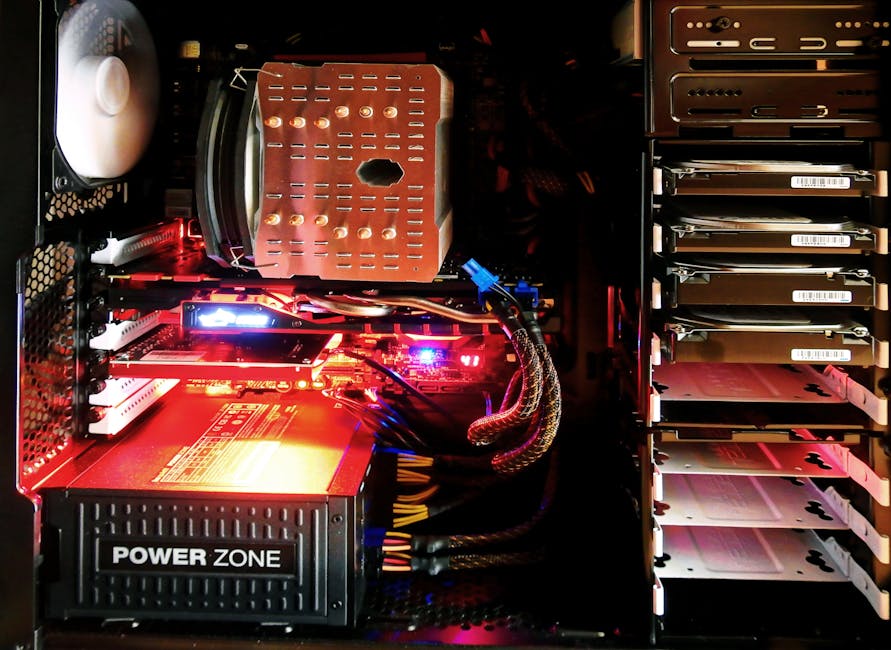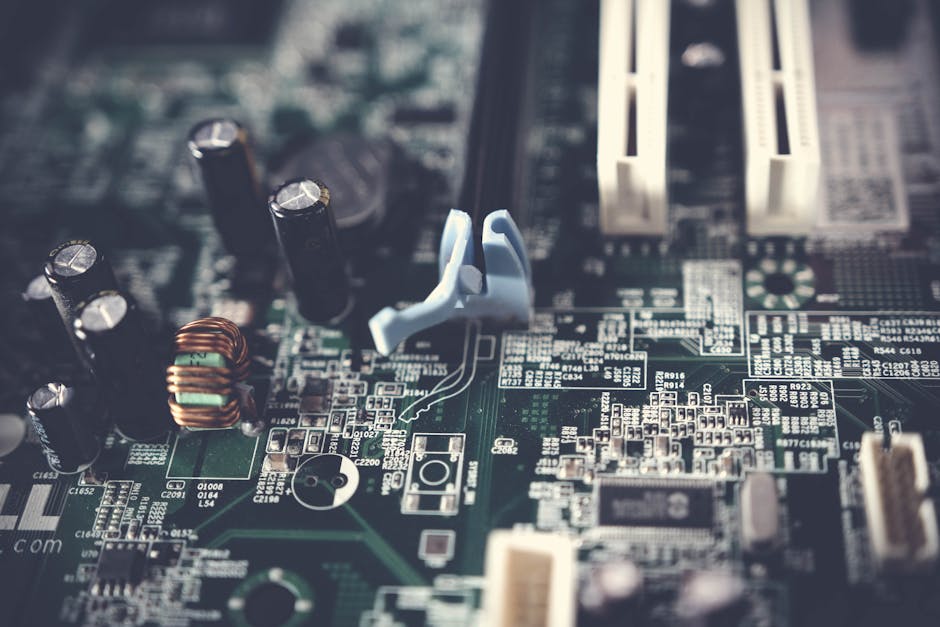Introduces Biostar X6413E: Latest Updates and Analysis
(PR) BIOSTAR Introduces the MS-X6413E Industrial PC

BIOSTAR, a leading manufacturer of IPC solutions, motherboards, graphics cards, and PC peripherals, is excited to introduce the MS-X6413E industrial system designed to meet the needs of a wide range of industries including automation machine builders, edge computing innovators, and HMI solution [website] MS-X6413E is tailored for businesses looking to stay ahead in today's fast-paced digital landscape. For system integrators, this product offers a seamless solution to keep business operations running smoothly, managing customer contact details, transaction history, and accounts with ease. Its unparalleled reliability ensures that businesses are always up-to-date and in control of their processes. Its versatility also extends to those building edge computing [website] MS-X6413E is equally suited for developers working on automation machines. With its compatibility with various processors, the MS-X6413E ensures smooth real-time control tasks, efficient data processing, and seamless communication with devices. Those venturing into edge computing will also find the MS-X6413E a perfect fit. With reliable, high-speed communication and support for various storage interfaces, it addresses the storage needs of edge computing devices involved in local data processing and caching.Designed with flexibility in mind, the MS-X6413E is also a fantastic solution for HMI (Human-Machine Interface) machines. It provides multiple connectivity options, including USB ports, Ethernet, and serial ports, which are essential for connecting peripherals such as barcode scanners, receipt printers, and card readers—critical components of POS and kiosk [website] MS-X6413E is powered by the Intel Atom x6413E processor, featuring four cores with a maximum speed of up to [website] GHz and delivering an impressive performance while maintaining ultra-low power consumption of just 9 W. Its fanless design ensures noiseless operation, making it perfect for environments where quiet performance is essential. The MS-X6413E supports 4K resolution and dual-monitor output, providing enhanced visual capabilities for demanding applications. It also attributes dual Intel [website] LAN ports for fast and stable network connectivity, ensuring seamless communication for data-intensive [website] MS-X6413E comes equipped with a 4G/5G SIM card slot, ensuring reliable remote connectivity. Furthermore, its COM port connection makes it convenient for use with POS systems or other specialized [website] the MS-X6413E, BIOSTAR continues to demonstrate its commitment to providing cutting-edge embedded solutions that drive efficiency, versatility, and performance for a wide range of industries. Whether you're building an automation, edge computing, or HMI solution, the MS-X6413E is the perfect partner for your next project.
Smart entry locks are the biggest improvement to home security since the lock-and-key system was invented more than a thousand years ago. In many case......
JD Vance took to the stage at the Paris AI Action Summit on Wednesday declaring that, “the United States of America is the leader in AI and our admini......
The NVIDIA RTX 5070 Ti gaming GPU is expected to be available starting February 20, although whether gamers are going to be able to purchase one anyti......
(PR) OnLogic Reveals the Axial AX300 Edge Server

AI/ML inference and training: Leveraging the power of AI/ML at the edge for real-time insights, predictive maintenance, and improved decision-making.
Data analytics: Processing and analyzing data generated by IoT devices and sensors in real-time to improve operational efficiency.
Virtualization: Consolidating multiple workloads onto a single server, optimizing resource utilization and simplifying deployment and management.
"The Axial AX300 empowers organizations of all sizes to unlock the true potential of edge computing," expressed Hunter Golden, Senior Product Manager at OnLogic. "By bringing compute resources closer to the data source, the AX300 reduces latency and opens up new possibilities for on-site applications, all while offering significant cost savings compared to cloud-based solutions. We're excited to see how the AX300 will be used to help enable unprecedented levels of performance, efficiency, and insight, transforming the way that businesses operate and innovate."
OnLogic, a leading provider of edge computing solutions, has launched the Axial AX300, a highly customizable and powerful edge server. The AX300 is engineered to help businesses of any size superior leverage their on-site data and unlock the potential of AI by placing powerful computing capabilities [website] Axial AX300 empowers organizations to seamlessly move computing resources closer to the data source, providing significant advantages in performance, latency, operational efficiency, and total cost of ownership over cloud-based data management. With its robust design, flexible configuration options, and advanced security aspects, the Axial AX300 is the ideal platform for a wide range of highly-impactful edge computing applications, including:Powered by up to two 5th Gen Intel Xeon Scalable processors, the Axial AX300 delivers exceptional performance for demanding workloads. Designed specifically for AI, these processors provide up to 14x the AI training and inference capabilities when compared to 3rd Gen Xeon [website] Axial AX300 can be configured to meet specific project requirements with up to 7x single-slot or 4x dual-slot GPUs, enabling up to 5864 TOPS of AI performance. In addition, a wide range of memory and storage options are available, accommodating a host of data management and analytics [website] PlatformBuilt-in security aspects such as locking front bezels, rear port-blocking attachments, and FIPS security level 1 and 2 compliance help protect valuable on-site data from tampering or intrusion. Onboard Intel Trust Domain Extensions (Intel TDX) offer increased confidentiality at the virtual machine (VM) level, while Intel Software Guard Extensions (Intel SGX) provide what Intel calls the most researched, updated, and comprehensive confidential computing technology in data centers on the market [website] network's edge commonly lives outside of standard office spaces, so the Axial AX300 was engineered to thrive where data-center servers might struggle. Advanced dust filtration, hot-swappable fans, and robust thermal management help to ensure maximum [website] Axial AX300's shallow-depth 3U form factor allows for versatile installation in component racks, and the system can also be installed in a tower orientation or wall-mounted. A license-fee free BMC enables remote monitoring and simplifies server management and [website] of OnLogic hardware can leverage the firm's strong relationships with software providers including Avassa, AWS, Nodeweaver, Red Hat, Viso, ZEDEDA and many others to architect the ideal data management, virtualization, or AI solution for their specific needs.
Keys, backpacks, luggage, pets, kids — we all have stuff we can’t afford to lose. A Bluetooth tracker is great for that, but only if you’re proactive ......
Unannounced Intel processor families have emerged online over the past week—one source, Jaykihn, has unearthed a treasure trove of speculative mobile ......
be quiet! bringt mit der Serie Silent Loop 3 drei neue AiO-Wasserkühlungen mit 240 bis 420 mm Radiatorgröße auf den Markt. So lang waren AiOs von be q......
(PR) HPE Introduces Next-Generation ProLiant Servers

This is a modern enterprise platform engineered for the hybrid world, designed with innovative security and control capabilities to help companies prevail over the evolving threat landscape and performance challenges that their legacy hardware cannot address."—Krista Satterthwaite, SVP and GM, Compute at HPE.
"We were the first customer in the world to order HPE ProLiant Compute Gen12 servers and the benefits of the upgrade were immediate."—William Bell, EVP, Products at phoenixNAP.
Hewlett Packard Enterprise today revealed eight new HPE ProLiant Compute Gen12 servers, the latest additions to a new generation of enterprise servers that introduce industry-first security capabilities, optimize performance for complex workloads and boost productivity with management aspects enhanced by artificial intelligence (AI). The new servers will feature upcoming Intel Xeon 6 processors for data center and edge environments."Our clients are tackling workloads that are overwhelmingly data-intensive and growing ever-more demanding," expressed Krista Satterthwaite, senior vice president and general manager, Compute at HPE. "The new HPE ProLiant Compute Gen12 servers give organizations - spanning public sector, enterprise and vertical industries like finance, healthcare and more - the horsepower and management insights they need to thrive while balancing their sustainability goals and managing costs. This is a modern enterprise platform engineered for the hybrid world, designed with innovative security and control capabilities to help companies prevail over the evolving threat landscape and performance challenges that their legacy hardware cannot address."The HPE ProLiant Compute Gen12 portfolio sets a new standard for enterprise security with built-in safeguards at every layer - from the chip to the cloud - and every phase of the server lifecycle. HPE Integrated Lights Out (iLO) 7 introduces an enhanced and dedicated security processor called secure enclave that is engineered from the ground up as HPE intellectual property. HPE ProLiant Compute servers with HPE iLO 7 will help organizations safeguard against future threats as the first server with quantum computing-resistant readiness and to meet the requirements for a high-level cryptographic security standard, the FIPS 140-3 Level 3 [website] chip-enhanced security aspects of HPE iLO 7 uniquely distinguish HPE ProLiant servers from other vendors. Embedded into the server hardware, secure enclave establishes an unbreakable chain of trust to protect against firmware attacks and creates full line-of-sight from the factory and throughout HPE's trusted supply chain. This extends to the end of the product lifecycle with HPE Onsite Decommission Services which collects equipment and transports it to an authorized sorting and recycling [website] Compute Ops Management is a cloud-based software platform that helps clients secure and automate server environments. Proactive and predictive automation, now enhanced with AI-driven insights, helps organizations improve energy efficiency by forecasting power usage and enabling enterprises to set thresholds to control costs and carbon emissions on a worldwide level. A new global map view simplifies management so clients can instantly identify server health issues across distributed IT environments and multivendor toolset integration reduces downtime by up to [website] hours per server every year. Automated on-boarding simplifies server set-up and ongoing management, particularly in remote or branch-office deployments where local IT resources are not [website] new HPE Compute Ops Management aspects, including AI-informed insights, new map-based visibility and third-party tool integration, will be available to HPE ProLiant Compute Gen10 servers and [website] aid clients evaluating future purchases, a standalone tool called HPE Power Advisor estimates environment performance metrics such as energy costs and greenhouse gas [website] additions to the HPE ProLiant Compute Gen12 portfolio are right-sized to address demanding workloads that include AI, data analytics, edge computing, hybrid cloud and virtual desktop infrastructure (VDI) solutions. Addressing the exponential growth in power demands placed on data centers, the HPE ProLiant Compute Gen12 portfolio is engineered to optimize performance, energy efficiency and cost with up to 41% superior performance per watt compared to legacy enterprise systems. HPE ProLiant Compute Gen12 servers deliver up to 65% in power savings per year and enable organizations to free up data center capacity with one Gen12 server providing the same compute performance as seven Gen10 servers."Partnering with reliable, innovative hardware vendors like HPE helps us meet the evolving needs of our clients and empower them with comprehensive, workload-optimized IT infrastructure solutions," expressed William Bell, executive vice president, Products at phoenixNAP. "We were the first customer in the world to order HPE ProLiant Compute Gen12 servers and the benefits of the upgrade were immediate. By delivering these advanced technologies as a service, phoenixNAP enables organizations of all sizes to tackle challenges related to performance, energy efficiency, data security, and infrastructure management at scale."To meet customer demand for more energy efficient data centers, HPE is offering optional direct liquid cooling (DLC) on Intel-based HPE ProLiant Compute Gen12 one-socket and two-socket rack servers. Liquid removes heat more efficiently than air, removing more than 3,000 times more heat based on volume. HPE has built the world's fastest direct-liquid cooled supercomputers and with more than 300 DLC patents and over 50 years of experience, HPE is a leader in deploying direct liquid-cooled servers and data [website] of the eight new HPE ProLiant Compute Gen12 servers featuring upcoming Intel Xeon 6 processors will be available Q1 2025. This includes HPE ProLiant Compute DL320, DL340, DL360, DL380, DL380a and ML350 Gen12 servers. HPE Synergy 480 and HPE ProLiant Compute DL580 Gen12 servers are expected Summer [website] HPE ProLiant Compute Gen12 portfolio will be available standalone or via HPE GreenLake, offering scalability, cost efficiency and service agility. These solutions can be purchased through an authorized channel partner. HPE Services helps clients make the most of the HPE ProLiant Compute Gen12 portfolio by providing advisory, professional, operational, managed, financial and asset management assistance to accelerate business operations.
OpenAI Deep Research is coming to Plus and free tier consumers.
CEO Sam Altman has all-but-confirmed Plus individuals will get 10 uses a month and free tier use......
What just happened? A divide emerged between the United States and Europe regarding the regulation of AI at the AI Action summit held in Paris this we......
Darmok N Jalad They want to upsell you. They know they have clients by the snarglies, or they wouldn’t ask so much for what once was a mid-grade gam......
Market Impact Analysis
Market Growth Trend
| 2018 | 2019 | 2020 | 2021 | 2022 | 2023 | 2024 |
|---|---|---|---|---|---|---|
| 4.9% | 5.9% | 6.2% | 6.9% | 7.3% | 7.5% | 7.6% |
Quarterly Growth Rate
| Q1 2024 | Q2 2024 | Q3 2024 | Q4 2024 |
|---|---|---|---|
| 6.9% | 7.2% | 7.4% | 7.6% |
Market Segments and Growth Drivers
| Segment | Market Share | Growth Rate |
|---|---|---|
| Semiconductors | 35% | 9.3% |
| Consumer Electronics | 29% | 6.2% |
| Enterprise Hardware | 22% | 5.8% |
| Networking Equipment | 9% | 7.9% |
| Other Hardware | 5% | 5.3% |
Technology Maturity Curve
Different technologies within the ecosystem are at varying stages of maturity:
Competitive Landscape Analysis
| Company | Market Share |
|---|---|
| Apple | 18.7% |
| Samsung | 16.4% |
| Intel | 12.9% |
| NVIDIA | 9.8% |
| AMD | 7.3% |
Future Outlook and Predictions
The Introduces Biostar X6413E landscape is evolving rapidly, driven by technological advancements, changing threat vectors, and shifting business requirements. Based on current trends and expert analyses, we can anticipate several significant developments across different time horizons:
Year-by-Year Technology Evolution
Based on current trajectory and expert analyses, we can project the following development timeline:
Technology Maturity Curve
Different technologies within the ecosystem are at varying stages of maturity, influencing adoption timelines and investment priorities:
Innovation Trigger
- Generative AI for specialized domains
- Blockchain for supply chain verification
Peak of Inflated Expectations
- Digital twins for business processes
- Quantum-resistant cryptography
Trough of Disillusionment
- Consumer AR/VR applications
- General-purpose blockchain
Slope of Enlightenment
- AI-driven analytics
- Edge computing
Plateau of Productivity
- Cloud infrastructure
- Mobile applications
Technology Evolution Timeline
- Technology adoption accelerating across industries
- digital transformation initiatives becoming mainstream
- Significant transformation of business processes through advanced technologies
- new digital business models emerging
- Fundamental shifts in how technology integrates with business and society
- emergence of new technology paradigms
Expert Perspectives
Leading experts in the hardware tech sector provide diverse perspectives on how the landscape will evolve over the coming years:
"Technology transformation will continue to accelerate, creating both challenges and opportunities."
— Industry Expert
"Organizations must balance innovation with practical implementation to achieve meaningful results."
— Technology Analyst
"The most successful adopters will focus on business outcomes rather than technology for its own sake."
— Research Director
Areas of Expert Consensus
- Acceleration of Innovation: The pace of technological evolution will continue to increase
- Practical Integration: Focus will shift from proof-of-concept to operational deployment
- Human-Technology Partnership: Most effective implementations will optimize human-machine collaboration
- Regulatory Influence: Regulatory frameworks will increasingly shape technology development
Short-Term Outlook (1-2 Years)
In the immediate future, organizations will focus on implementing and optimizing currently available technologies to address pressing hardware tech challenges:
- Technology adoption accelerating across industries
- digital transformation initiatives becoming mainstream
These developments will be characterized by incremental improvements to existing frameworks rather than revolutionary changes, with emphasis on practical deployment and measurable outcomes.
Mid-Term Outlook (3-5 Years)
As technologies mature and organizations adapt, more substantial transformations will emerge in how security is approached and implemented:
- Significant transformation of business processes through advanced technologies
- new digital business models emerging
This period will see significant changes in security architecture and operational models, with increasing automation and integration between previously siloed security functions. Organizations will shift from reactive to proactive security postures.
Long-Term Outlook (5+ Years)
Looking further ahead, more fundamental shifts will reshape how cybersecurity is conceptualized and implemented across digital ecosystems:
- Fundamental shifts in how technology integrates with business and society
- emergence of new technology paradigms
These long-term developments will likely require significant technical breakthroughs, new regulatory frameworks, and evolution in how organizations approach security as a fundamental business function rather than a technical discipline.
Key Risk Factors and Uncertainties
Several critical factors could significantly impact the trajectory of hardware tech evolution:
Organizations should monitor these factors closely and develop contingency strategies to mitigate potential negative impacts on technology implementation timelines.
Alternative Future Scenarios
The evolution of technology can follow different paths depending on various factors including regulatory developments, investment trends, technological breakthroughs, and market adoption. We analyze three potential scenarios:
Optimistic Scenario
Rapid adoption of advanced technologies with significant business impact
Key Drivers: Supportive regulatory environment, significant research breakthroughs, strong market incentives, and rapid user adoption.
Probability: 25-30%
Base Case Scenario
Measured implementation with incremental improvements
Key Drivers: Balanced regulatory approach, steady technological progress, and selective implementation based on clear ROI.
Probability: 50-60%
Conservative Scenario
Technical and organizational barriers limiting effective adoption
Key Drivers: Restrictive regulations, technical limitations, implementation challenges, and risk-averse organizational cultures.
Probability: 15-20%
Scenario Comparison Matrix
| Factor | Optimistic | Base Case | Conservative |
|---|---|---|---|
| Implementation Timeline | Accelerated | Steady | Delayed |
| Market Adoption | Widespread | Selective | Limited |
| Technology Evolution | Rapid | Progressive | Incremental |
| Regulatory Environment | Supportive | Balanced | Restrictive |
| Business Impact | Transformative | Significant | Modest |
Transformational Impact
Technology becoming increasingly embedded in all aspects of business operations. This evolution will necessitate significant changes in organizational structures, talent development, and strategic planning processes.
The convergence of multiple technological trends—including artificial intelligence, quantum computing, and ubiquitous connectivity—will create both unprecedented security challenges and innovative defensive capabilities.
Implementation Challenges
Technical complexity and organizational readiness remain key challenges. Organizations will need to develop comprehensive change management strategies to successfully navigate these transitions.
Regulatory uncertainty, particularly around emerging technologies like AI in security applications, will require flexible security architectures that can adapt to evolving compliance requirements.
Key Innovations to Watch
Artificial intelligence, distributed systems, and automation technologies leading innovation. Organizations should monitor these developments closely to maintain competitive advantages and effective security postures.
Strategic investments in research partnerships, technology pilots, and talent development will position forward-thinking organizations to leverage these innovations early in their development cycle.
Technical Glossary
Key technical terms and definitions to help understand the technologies discussed in this article.
Understanding the following technical concepts is essential for grasping the full implications of the security threats and defensive measures discussed in this article. These definitions provide context for both technical and non-technical readers.
TPU intermediate
CPU intermediate
interface intermediate
liquid cooling intermediate
scalability intermediate
quantum computing intermediate
platform intermediate
API beginner
 How APIs enable communication between different software systems
How APIs enable communication between different software systems

